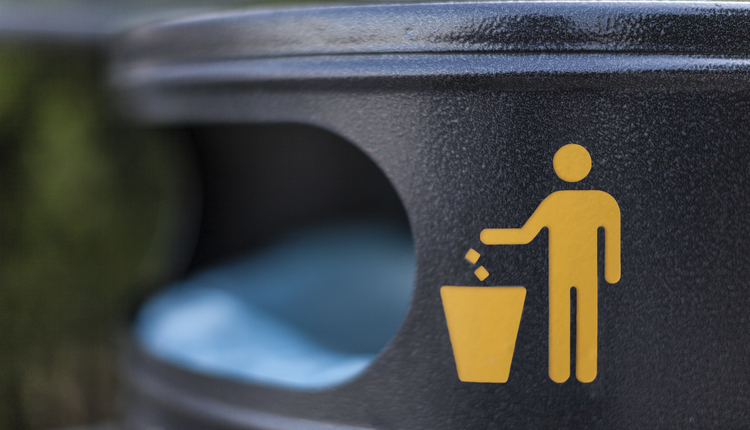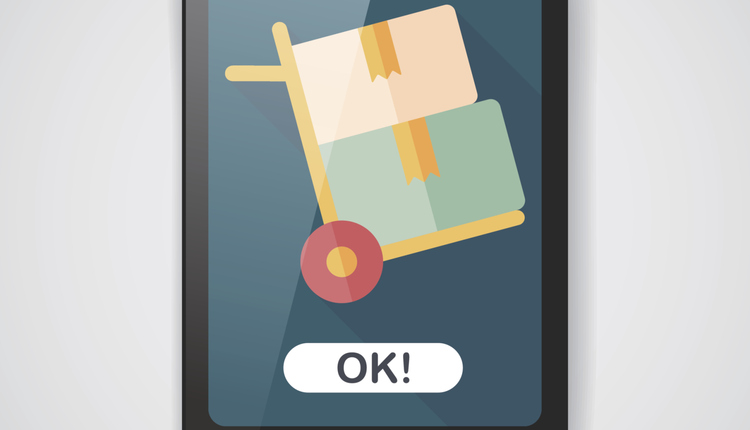I'm not a Luddite. I've been involved in technology my entire career. I developed applications for the Xerox 9700 production laser printer. I saw data storage progress from punched cards and paper tape to magnetic tapes, DASD, 3 sizes of floppy disks, flash drives, and the cloud. I had a Betamax!
I worked my way through challenges associated with ZIP+4, Postnet, IMb, shape-based pricing, and a hundred other postal changes over the years.
I don't want to go back to an era where postal mail was the only choice for affordable and accessible customer communications. I am thrilled that I can look up documents online, pay bills, watch movies, track parcels, or even order stamps over the internet. Electronic delivery channels and digital documents have enabled functionality that paper could never achieve.
But there are still some things that mail does better. Sometimes I think we lose sight of that fact. Try bringing up some of these points the next time someone tries to tell you that mail is dead
WHY MAIL IS BETTER FOR RECIPIENTS
Mailbox Population
In my postal mailbox today there were three pieces. They came at 11:30. I dealt with them and I'm done until tomorrow. In contrast I've received 64 email messages - so far. They are still coming in. It isn't unusual to get over 100 messages a day from outside my company. I spend more time dealing with emails than practically anything else I do. A good portion of that time is spent looking for some message I saw earlier or trying to figure out what I can safely delete.
Price
When was the last time you paid the Postal Service for them to deliver the mail that was addressed to you? It's free for the recipient. The mailer bears all the costs. What a great deal! Getting emails and other digital communications requires an internet connection paid for by the consumer. My bundled cable services provide my gateway to the digital world. It's definitely NOT free. Not even close.
Equipment
To read digital messages, you need a DEVICE. You also need an internet connection, an electrical outlet, or a charged battery. To read postal mail you need a letter opener. Reading glasses may be a required accessory for some of us - probably because we ruined our eyes looking at computer screens all day.
Sensory Stimulation
There are some things that just can't be replicated in digital form. Like the scent of cologne, the effectiveness of a laundry detergent, or the taste of a breakfast cereal. Yes I know you can send me links to a video showing OTHER people enjoying these things but I'd prefer to do that myself.
Portability
Digital devices are great for taking giant collections of e-books, movies, photos, or music along with you everywhere you go. But paper was portable way before iPads came about. I've found that just about any piece of paper becomes pocket-sized with 4 folds or less. Paper doesn't require time to boot up and you can still read it in bright sunlight. If you drop paper documents in the pool the ink runs. If you drop your smart phone before your contract is up you're out 600 bucks.
WHY MAIL IS BETTER FOR MAILERS
No Middleman
OK, I guess the postal service is between the mailer and the recipient. But my postal carrier doesn't make decisions about what pieces of mail she's going to deliver and which ones to throw out because they might be unsolicited or suspicious. Postal mailers do not have to worry about spam filters, black lists, corporate blocking, or Gmail tabs. As long as it's properly addressed and prepared, postal mail will almost always make it to the mailbox.
Presentation Control
Pick your page size, colors, fonts, and graphics. Print on the paper. Put the paper in an envelope and those elements will look the same when your customers view them as they did when they left your facility. If only email were that easy! Digital document developers today have to design their material to be viewed on anything from a cell phone that's two inches wide to a 60 inch TV!
By the way, make sure you code the HTML so that the emails look great in all the different email clients. And don't use too many graphics or they will take too long to download or get blocked altogether. Avoid using helpful and attention-getting words like FREE too often or your emails will be tagged as spam. Use only the handful of fonts that are widely supported. Otherwise your email message may end up looking like a ransom note.
Less Competition
According to a USPS study a couple of years ago, the average consumer receives two direct mail marketing pieces a day and 57 email marketing messages. It's probably gotten worse since then. If you want your message to stand out, I like the odds in the postal mailbox better.
Deliverability
Postal mailers can determine disposition of individual mailpieces. If an address is missing an apartment number or the street is misspelled, their postal software will tell them before they mail. If the recipient has moved, the USPS will tell the mailer (and maybe even forward the mail). If a piece was successfully delivered, IMb tracking can tell them when it arrived.
I have a Yahoo email address I set up in 1999. About twice a year I go in and clear out all the messages. The same mailers send email to that address year after year. The mailers know their messages are delivered to a valid address, but none of the emails are ever read. People like me are probably hindering the careers of some poor marketing people whose performance evaluations are based on email response ratios.
Preference
Despite all the hype about digital mail boxes and electronic bill presentment, most consumers in the US still prefer to receive these documents on paper - by about a 5 to 1 margin. Not many companies have achieved more than a 20% adoption rate. They really want to be at 35%, so something's got to give. I'd be cautious about forcing customers to go digital against their will.
Incentive to Open
In the postal mail world, it is the job of the envelope to entice recipients to open the piece. With all the real estate available on the outside of an envelope you can use eye-catching fonts, color, graphics, and maybe even variable information like maps to encourage recipients to look at the material inside. Some mailers use window envelopes to give recipients a peek at interesting contents.
For e-mailers, it's the subject line that's really important. This is pretty limiting. Experts suggest you keep subject lines short so important words aren't truncated in the in-box display - perhaps 35 characters. Unless the recipient uses a preview window, they have no additional clues about what the message contains. It might be a virus. It might be offensive. Just the act of opening a message can cause email addresses to be added to more spammer lists.
Mike Porter is an expert in Print and Mail operations and President of Print/Mail Consultants, an independent consulting firm that helps companies nationwide lower costs and integrate new technologies in their document production workflows. For more of his thoughts and ideas visit www.printmailconsultants.com and sign up for Practical Stuff - the free newsletter for document operations. Your questions on this topic are welcome. Send them to mporter@printmailconsultants.com. Follow PMCmike on Twitter
I worked my way through challenges associated with ZIP+4, Postnet, IMb, shape-based pricing, and a hundred other postal changes over the years.
I don't want to go back to an era where postal mail was the only choice for affordable and accessible customer communications. I am thrilled that I can look up documents online, pay bills, watch movies, track parcels, or even order stamps over the internet. Electronic delivery channels and digital documents have enabled functionality that paper could never achieve.
But there are still some things that mail does better. Sometimes I think we lose sight of that fact. Try bringing up some of these points the next time someone tries to tell you that mail is dead
WHY MAIL IS BETTER FOR RECIPIENTS
Mailbox Population
In my postal mailbox today there were three pieces. They came at 11:30. I dealt with them and I'm done until tomorrow. In contrast I've received 64 email messages - so far. They are still coming in. It isn't unusual to get over 100 messages a day from outside my company. I spend more time dealing with emails than practically anything else I do. A good portion of that time is spent looking for some message I saw earlier or trying to figure out what I can safely delete.
Price
When was the last time you paid the Postal Service for them to deliver the mail that was addressed to you? It's free for the recipient. The mailer bears all the costs. What a great deal! Getting emails and other digital communications requires an internet connection paid for by the consumer. My bundled cable services provide my gateway to the digital world. It's definitely NOT free. Not even close.
Equipment
To read digital messages, you need a DEVICE. You also need an internet connection, an electrical outlet, or a charged battery. To read postal mail you need a letter opener. Reading glasses may be a required accessory for some of us - probably because we ruined our eyes looking at computer screens all day.
Sensory Stimulation
There are some things that just can't be replicated in digital form. Like the scent of cologne, the effectiveness of a laundry detergent, or the taste of a breakfast cereal. Yes I know you can send me links to a video showing OTHER people enjoying these things but I'd prefer to do that myself.
Portability
Digital devices are great for taking giant collections of e-books, movies, photos, or music along with you everywhere you go. But paper was portable way before iPads came about. I've found that just about any piece of paper becomes pocket-sized with 4 folds or less. Paper doesn't require time to boot up and you can still read it in bright sunlight. If you drop paper documents in the pool the ink runs. If you drop your smart phone before your contract is up you're out 600 bucks.
WHY MAIL IS BETTER FOR MAILERS
No Middleman
OK, I guess the postal service is between the mailer and the recipient. But my postal carrier doesn't make decisions about what pieces of mail she's going to deliver and which ones to throw out because they might be unsolicited or suspicious. Postal mailers do not have to worry about spam filters, black lists, corporate blocking, or Gmail tabs. As long as it's properly addressed and prepared, postal mail will almost always make it to the mailbox.
Presentation Control
Pick your page size, colors, fonts, and graphics. Print on the paper. Put the paper in an envelope and those elements will look the same when your customers view them as they did when they left your facility. If only email were that easy! Digital document developers today have to design their material to be viewed on anything from a cell phone that's two inches wide to a 60 inch TV!
By the way, make sure you code the HTML so that the emails look great in all the different email clients. And don't use too many graphics or they will take too long to download or get blocked altogether. Avoid using helpful and attention-getting words like FREE too often or your emails will be tagged as spam. Use only the handful of fonts that are widely supported. Otherwise your email message may end up looking like a ransom note.
Less Competition
According to a USPS study a couple of years ago, the average consumer receives two direct mail marketing pieces a day and 57 email marketing messages. It's probably gotten worse since then. If you want your message to stand out, I like the odds in the postal mailbox better.
Deliverability
Postal mailers can determine disposition of individual mailpieces. If an address is missing an apartment number or the street is misspelled, their postal software will tell them before they mail. If the recipient has moved, the USPS will tell the mailer (and maybe even forward the mail). If a piece was successfully delivered, IMb tracking can tell them when it arrived.
I have a Yahoo email address I set up in 1999. About twice a year I go in and clear out all the messages. The same mailers send email to that address year after year. The mailers know their messages are delivered to a valid address, but none of the emails are ever read. People like me are probably hindering the careers of some poor marketing people whose performance evaluations are based on email response ratios.
Preference
Despite all the hype about digital mail boxes and electronic bill presentment, most consumers in the US still prefer to receive these documents on paper - by about a 5 to 1 margin. Not many companies have achieved more than a 20% adoption rate. They really want to be at 35%, so something's got to give. I'd be cautious about forcing customers to go digital against their will.
Incentive to Open
In the postal mail world, it is the job of the envelope to entice recipients to open the piece. With all the real estate available on the outside of an envelope you can use eye-catching fonts, color, graphics, and maybe even variable information like maps to encourage recipients to look at the material inside. Some mailers use window envelopes to give recipients a peek at interesting contents.
For e-mailers, it's the subject line that's really important. This is pretty limiting. Experts suggest you keep subject lines short so important words aren't truncated in the in-box display - perhaps 35 characters. Unless the recipient uses a preview window, they have no additional clues about what the message contains. It might be a virus. It might be offensive. Just the act of opening a message can cause email addresses to be added to more spammer lists.
Mike Porter is an expert in Print and Mail operations and President of Print/Mail Consultants, an independent consulting firm that helps companies nationwide lower costs and integrate new technologies in their document production workflows. For more of his thoughts and ideas visit www.printmailconsultants.com and sign up for Practical Stuff - the free newsletter for document operations. Your questions on this topic are welcome. Send them to mporter@printmailconsultants.com. Follow PMCmike on Twitter















